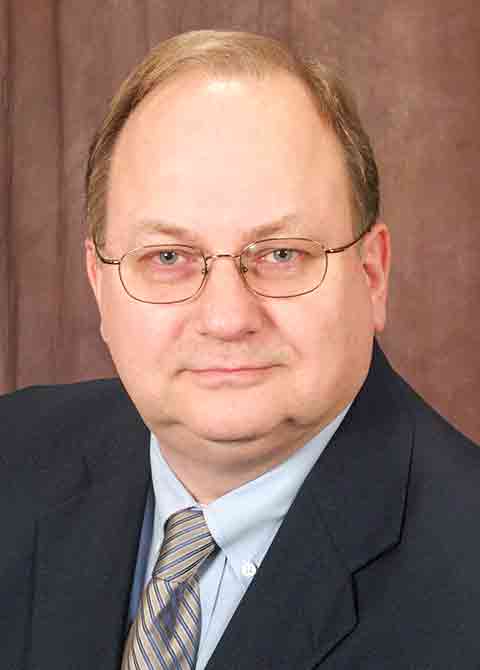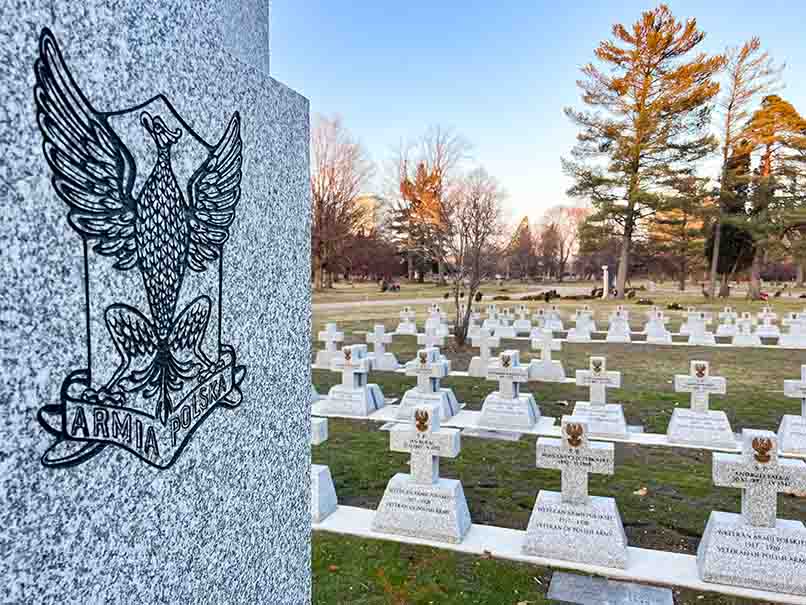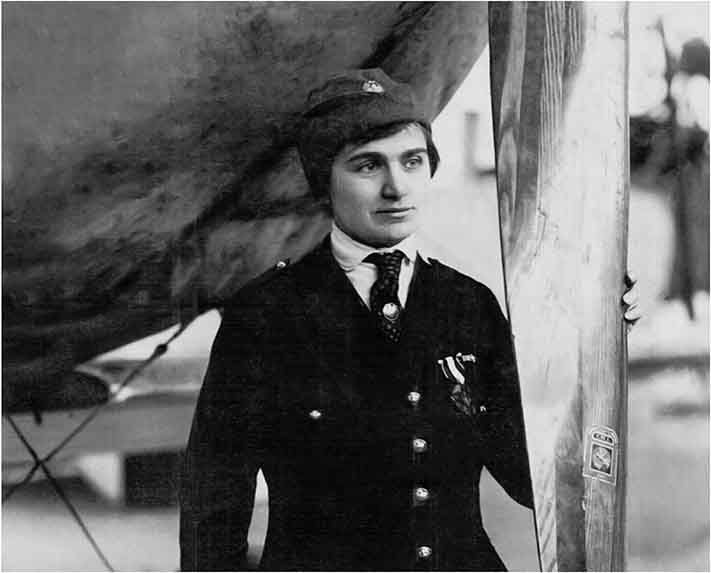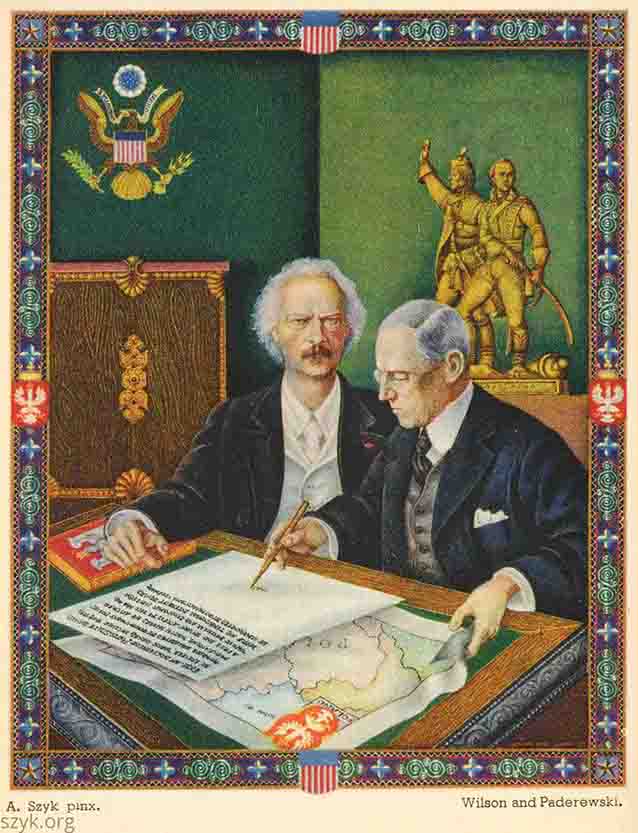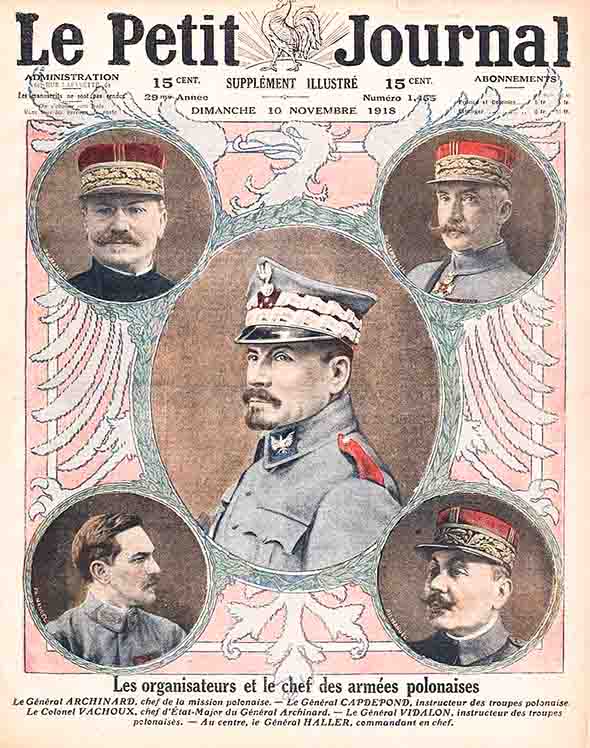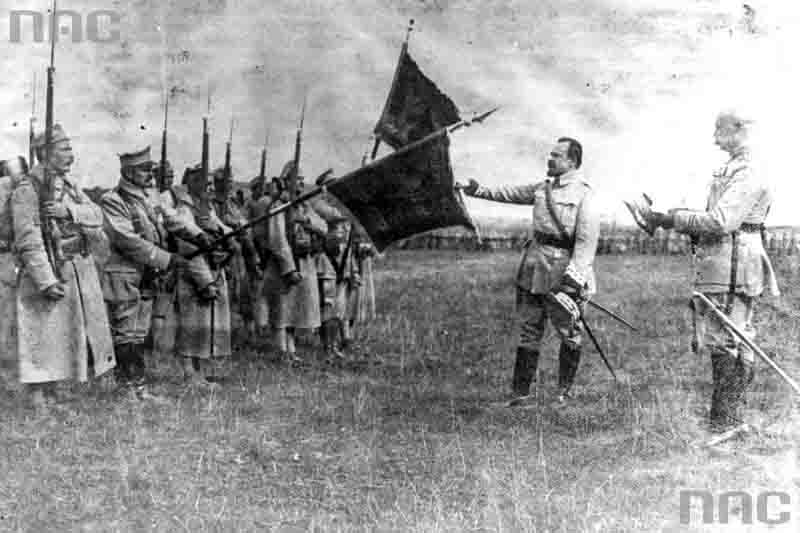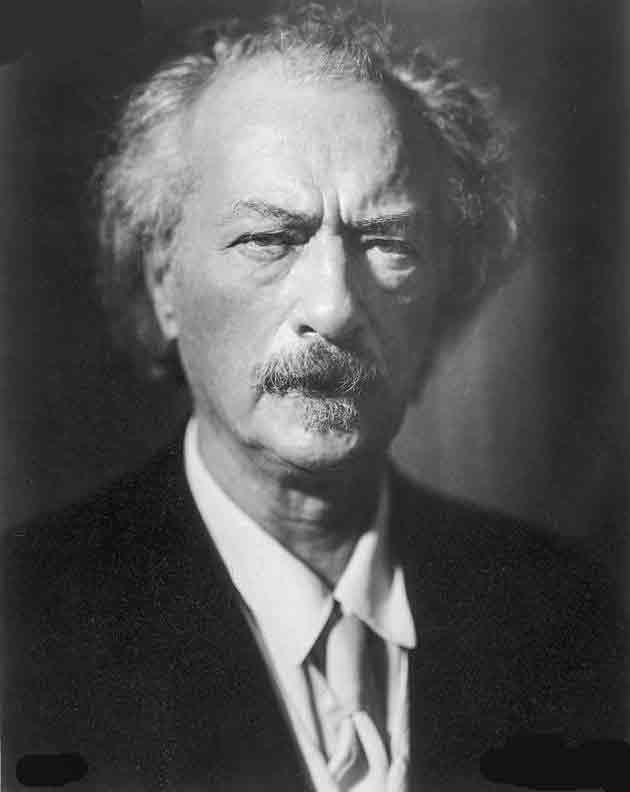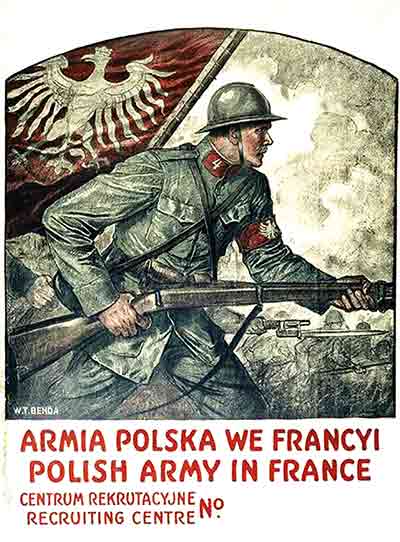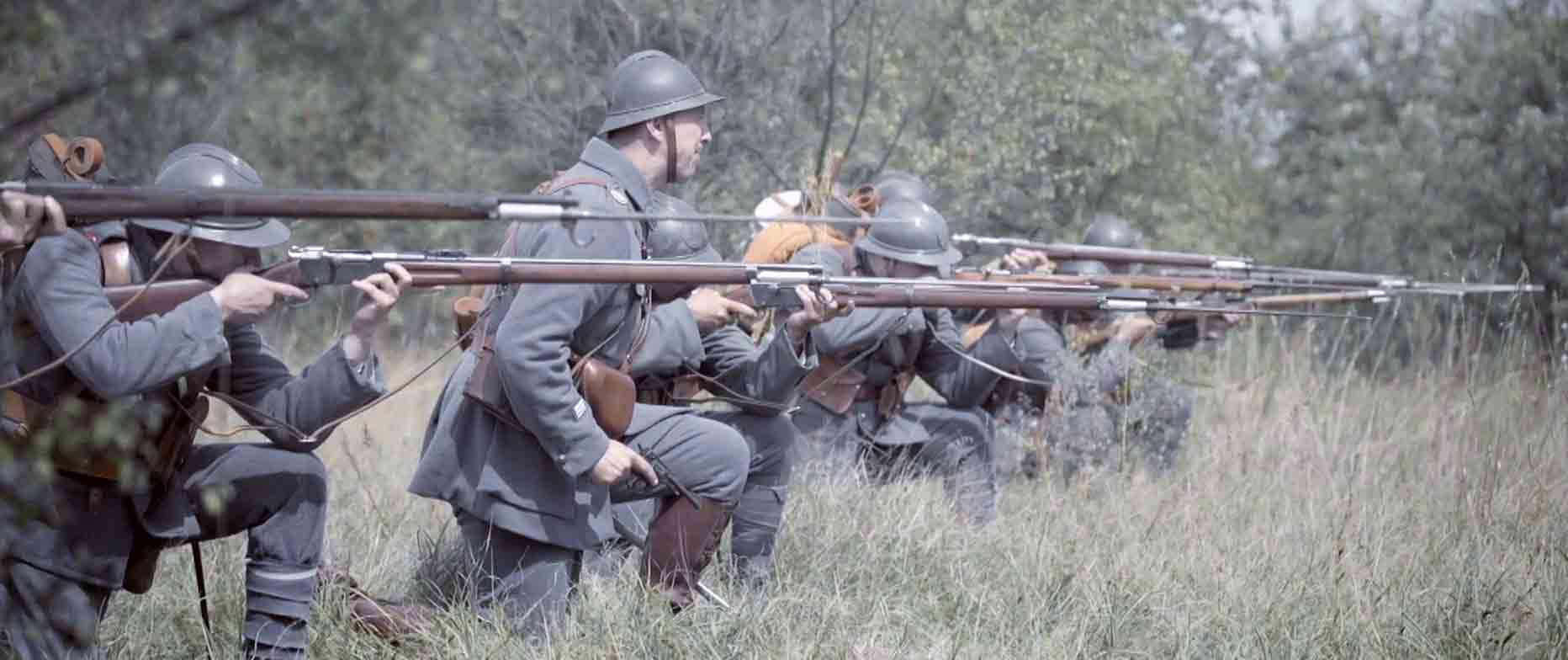In 1917, Jan Ignacy Paderewski composed and wrote the words of the song "Hej, Orle Biały!" (Hey White Eagle!) The song was to be the battle anthem of the Polish Army in France, known as the Blue Army. On the New York first edition of the song from 1918, the composer ordered a note reading: "all proceeds from the sale of this anthem are intended for national purposes".
Another anniversary of the arrival of the most modern part of the Polish Army - the Blue Army - has passed silently. The return order of April 15, 1919, signed by General Haller, read:
The longed-for moment of the march of the Polish Army from Italian, French and American lands to Poland has come. Just like a hundred years ago, we are returning to Poland today, happier than those ... Polish Divisions are going to the country, created in foreign lands by the efforts of the entire Polish nation, and especially thanks to the bravery and vigor of its exiles in both Americas, North and South; thanks to the persistent work of Polish statesmen such as: Ignacy Paderewski and Roman Dmowski, thanks to the brave act of the Head of the Republic of Poland, Józef Piłsudski.
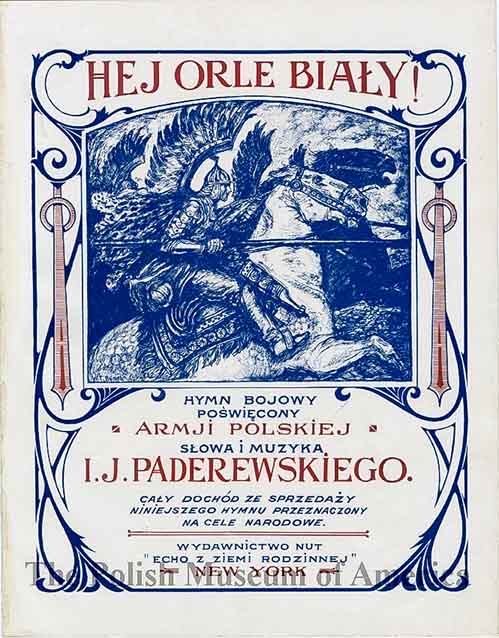
"Hej Orle Bialy!" (Hey White Eagle!), cover of the first edition of Ignacy Paderewski's songs, 1918 (Source: Polish Museum of America)
The first transport left France on April 16. The last of the 383 trains arrived in Poland in mid-June. General Haller arrived in Warsaw on April 21, 1919. He was greeted as a national hero, and the magistrate awarded him the title of honorary citizen of the city.
The Blue Army was, for those times, very well equipped and trained. It had 120 of the latest Renault FT-17 tanks, aviation - seven squadrons, a total of 98 aircraft, engineer troops, instructors, cavalry, artillery, communications troops, 7 field hospitals and very high morale of soldiers. Already in May, it was sent to the eastern front, the front of the Polish-Ukrainian struggle, the greatest threat from Soviet Russia.

Transport of troops of General Józef Haller's army from France to Poland. Soldiers standing on the track next to a train transporting military equipment. 1919. (Source: National Digital Archives)
Despite his strategic successes, or perhaps because of them, General Haller did not find the approval of the Chief of State, Józef Piłsudski. In June 1919, he was recalled as commander of the Blue Army and sent to the Polish-German borderland to take command of the South-Western Front. On September 1, 1920, the Blue Army was completely disbanded. Individual formations became part of other national military units. Volunteers from the United States were demobilized, which irritated the Polish American community.
The situation of the demobilized soldiers of the Blue Army was very bad. The matter was discussed at the highest levels of American authorities. Julius Kahn, Congressman from California, and Congressman Kleczka from Milwaukee, Wisconsin, took care of it. The issue of the return of demobilized volunteers was raised in the House of Representatives in the early 1920s. The House authorized Secretary of War Baker to transport demobilized Hallerians - also American citizens - on American transport ships. These were to be returning ships bringing supplies to American soldiers stationed in the occupied Rhineland. Demobilized at various times, the soldiers waited for transport in overcrowded camps in Skierniewice and Grupa near Grudziądz.
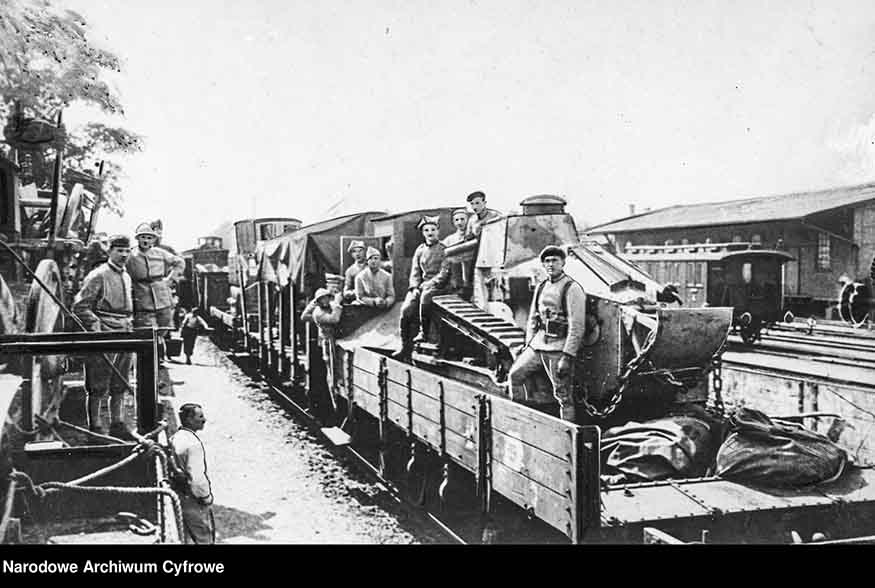
Soldiers on a railway platform carrying a Renault FT-17 tank. (Source: National Digital Archives)
Observers from the American Red Cross later reported that Poland returned its defenders in very poor physical and mental condition, emaciated, hungry, lice-infested, without money, without underwear. The first cases of typhus were recorded among the soldiers.
In total, 12,546 Haller soldiers returned to the United States. Roman Dmowski, in a letter to Jan Smulski dated October 12, 1920 and published in "Dziennik Związkowy", thanked for the contribution of the Polish community to the work of regaining independence. Apart from the recognition and awarding them with the Cross of American Volunteers, the veterans were left to fend for themselves. They themselves began to organize help for needy colleagues.
In May 1921, they established SWAP - the Association of Veterans of the Polish Army in America. Its first president was Col. Dr. Teofil Starzyński, president of the Polish Falcon Association in America. A tireless organizer of the recruitment campaign, faithful to the falcon oath, he went with his friends to the front as a doctor. The list of people like him is long.
The SWAP fund was supported in 1926, with the sum of $10,000, by the greatest of Falcons, I.J. Paderewski. It is thanks to people like THEM that the powerful Blue Army was created.
The Blue Army and the political game around it are completely ignored in Polish historiography. The fact is that Haller's Army was the best trained and best armed tactical unit of the Polish army and represented very high morale and combat capabilities. As a whole, under the command of General Haller, it could pose a serious threat to the emerging legend of Marshal Piłsudski. In 1919, he began to systematically replace the "blue" commanders with his own, legionnaires. The demobilization of volunteers from the United States, the best part of this army, in the face of the threat from the Soviet army was something astonishing.
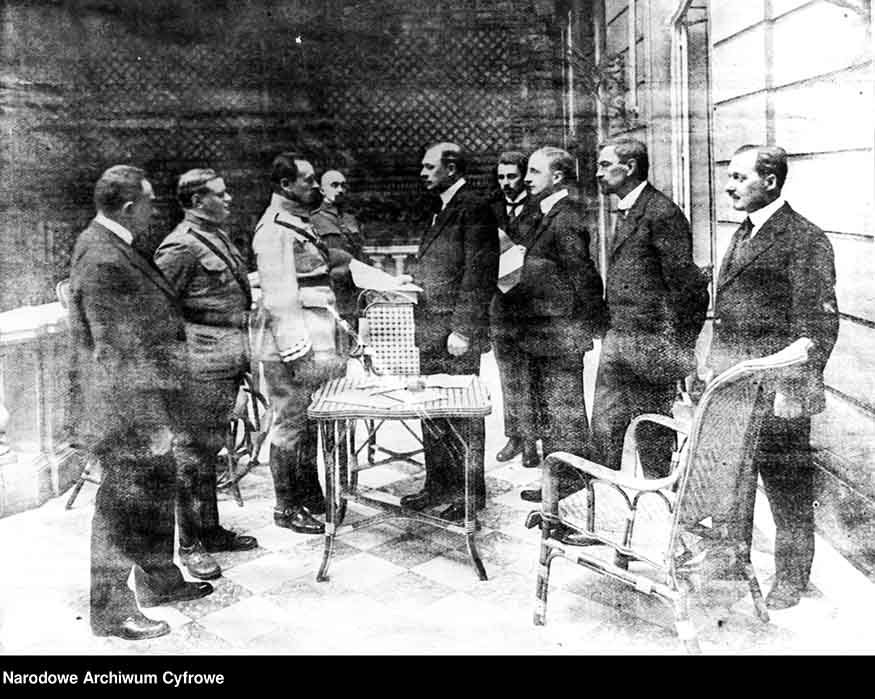
The taking of command by General Józef Haller. Maurycy Zamoyski (fifth from the right) appoints Józef Haller (third from the left) as commander-in-chief. (Source: National Digital Archives)
It was not surprising, however, that when in June 1920, in the face of the Bolshevik threat, a volunteer army began to be organized, demobilized Hallerians flocked to it en masse.
Today, in the Polish consulates in the United States, on the anniversary of Poland regaining independence, the song "My First Brigade" still resounds. Perhaps it is worth realizing that the basis of the identity of the American Polonia are these volunteers from the Blue Army and their neglected graves. Maybe after 100 years, it's time to start fixing the mistakes of history.



